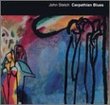| All Artists: Ludwig van Beethoven, Wilhelm Kempff Title: Beethoven: The Complete Piano Sonatas Members Wishing: 0 Total Copies: 0 Label: Deutsche Grammophon Release Date: 7/12/1991 Album Type: Box set Genre: Classical Styles: Forms & Genres, Sonatas, Historical Periods, Classical (c.1770-1830), Modern, 20th, & 21st Century, Romantic (c.1820-1910) Number of Discs: 9 SwapaCD Credits: 9 UPC: 028942930629 |
Search - Ludwig van Beethoven, Wilhelm Kempff :: Beethoven: The Complete Piano Sonatas
 | Ludwig van Beethoven, Wilhelm Kempff Beethoven: The Complete Piano Sonatas Genre: Classical
Wilhelm Kempff was the premier German pianist of the postwar period, so it's no surprise that he was considered one of the supreme interpreters of Beethoven. He recorded complete sets of the sonatas and concertos twice, an... more » |
Larger Image |
CD DetailsSynopsis
Amazon.com Wilhelm Kempff was the premier German pianist of the postwar period, so it's no surprise that he was considered one of the supreme interpreters of Beethoven. He recorded complete sets of the sonatas and concertos twice, and just about all the rest of the chamber music with piano as well. Kempff was a classicist by nature, and his approach to Beethoven was clear and poised rather than impulsive, but it was never lacking in sheer power or virtuosity when necessary. His last cycle of Beethoven sonatas is rightly regarded as his musical testament. Even if the mono recordings offered a few more exciting moments in a couple of works, you can't go wrong here--there isn't a dud in the lot. --David Hurwitz Similar CDs
|
CD ReviewsDollar for Dollar, the Best Set of Beethoven Sonatas on CD Hank Drake | Cleveland, OH United States | 05/09/2000 (5 out of 5 stars) "Beethoven's piano sonatas were one of humanity's great achievements. They have been recorded by many pianists including Artur Schnabel, Alfred Brendel, Richard Goode, and John O'Connor--and nearly every pianist of note has recorded at least a few of the most popular sonatas.What makes the Kempff set work best for me is the lack of a dogmatic, cookie cutter approach to the music. Kempff approaches each piece as a masterwork in its' own right. The tempos are more sensible than those adopted by most other pianists, particularly in the slower movements. For example, in the Hammerklavier Sonata, most pianists cannot resist the urge to play the Adagio almost as a Largo--ignoring the fact that such a tempo would have made the movement incomprehensible on a piano of Beethoven's time--which had a quick tonal decay. Speaking of tone, Kempff has an especially beautiful sound--a product of his 19th century training. The phrasing is more flexible than today's "red light, green light" stop and go approach, and Kempff, unlike so many of today's pianists, never lets musical point making get in the way of the big picture, structually. Although Kempff was getting along in years when these recordings were made--the 1960s--he is fully up to the technical hurdles these sonatas contain. The only disappointment on this set is in the "Appassionata" Sonata, where Kempff's clear headed approach does not suit this rage filled piece. For that particular piece, it's best to go with Richter's RCA recording. On the whole, this is the best set of Beethoven Sonatas currently available on CD--and it's at bargain price!" Wilhelm Kempff Plays the Beethoven Piano Sonatas Robin Friedman | Washington, D.C. United States | 08/17/2005 (5 out of 5 stars) "Beethoven's "Tagebuch" includes the following famous entry: "The starry heavens above, the moral law within -- Kant!" Beethoven was alluding to Kant's statement in the "Critique of Practical Reason" of the two things that filled him with awe. But, in a simple way, Beethoven's statement could be read to show two related ways of understanding his music: the first as heroic, heaven-storming, and outwardly directed, and the second as inward, reflective, and meditative. Some of Beethoven's music can be seen as occupying on or the other end of the polarity. Much of the music somehow occupies both ends. The same holds true as a rough approach to the performance of Beethoven's music -- including the 32 piano sonatas. Some artists emphasize the dramatic, rugged and virtuosic characteristics of the sonatas while others focus upon the music's inward and introspective qualities. The great German pianist Wilhelm Kempff's classic recording of the complete piano sonatas is clearly within the latter approach. Kempff (1895 -- 1991) recorded the complete Beethoven sonata-cycle twice, the first time in the 1950s and the second time in the 1960s. I had the original version on LP and purchased the CD set when LPs became obsolete. I recently had the opportunity to relisten to Kempff's renditions of the sonatas in their entirety. Kempff's readings of the sonatas are highly personal and introspective. His tempos tend to be slow and fluid, the pedal is used a great deal, phrasing is highly legato, and volume is, for the most part, subdued and restrained. He offers a metaphysical, thoughtful reading of Beethoven which probes within. It is a moving and convincing way of rendering the sonatas, and I came away from my experience with the set over the past several days with a renewed devotion to this music. I have attempted about half of the sonatas myself over the years on the piano. Beethoven's sonatas date from his youthful years in Bonn before his 1792 move to Vienna (the two sonatas of opus 49) to about 1822 (opus 111), five years before the composer's death. Thus, they occupied Beethoven for almost the entirety of his creative life. In listening to this complete set, the listener can follow Beethoven's development essentially chronologically and learn more first-hand about the sonatas and about the changes in Beethoven's styles of composition than can be gained from reading many studies. Listeners interested in a complete set of the Beethoven sonatas will probably have some familiarity with some of the better-known named sonatas, such as the "Pathetique", opus 13, the "Moonlight" opus 27 no. 2, the "Waldstein", opus 53, or the "Appassionata", opus 57. After falling in love with some of these works, it will be time for the listener to explore the entire series. Kempff brings his own personal and introspective readings to each of these familar works. I think he does best with the rondo finale of the "Waldstein," with the "Moonlight" sonata, and with the two final movements of the "Tempest", opus 31 no. 2. His readings of these familiar works on the whole will offer fresh insight into these great sonatas. But the greatest attraction of this set is the opportunity it provides to explore some of Beethoven's less frequently performed works. Again, Kempff is at his best in works of an introspective character. Thus, those coming to the sonata-cycle for the first time will enjoy his performances of the opus 26 sonata, with the opening variations and the celebrated funeral march, of opus 78, 79, and 81a ("Les Adieux"), of opus 90, and of opus 101, 109, 110, and the great end to the series, opus 111. Opus 90, 101, and 109 are particular favorites of mine, and Kempff plays them beautifully. There is yet another group of sonatas that also receive excellent readings on the set. This group includes two excellent ambitious early works, opus 2 no. 3 and opus 7 (another favorite), the three sonatas of opus 10, the under-appreciated opus 22, the companion to the more famous "Moonlight" sonata, opus 27 no. 1, opus 31 no. 3 and the enigmatic opus 54, sandwiched between the "Waldstein" and the "Appassionata". The magisterial and heroic "Hammerklavier" sonata, opus 106, is in a class by itself. Each listeners's choices and fovorites among the 32 will vary and change with time and repeated hearings. This collection is an excellent introduction to all of them. There are many recordings of the set of 32 sonatas and many approaches to the interpretation of Beethoven. His music is broader and deeper than any single reading. I have lived with my set of Kempff for a long time and am still moved and inspired by his playing of this inexhaustible music. Listeners wanting to get to know this great body of work will find much to cherish in these performances by Wilhelm Kempff. Robin Friedman " Which One To Get, That Is The Question BLee | HK | 02/09/2005 (5 out of 5 stars) "
For those who are not too familiar with Kempff, he is generally regarded as one of the most reputed Beethoven interpreter after Schnabel. Gulda was supposed to succeed them and was somehow stopped short. In Kempff, just like most pianists of the older generation, there is a strong element of improvisation, an element in the making of music which make him sound so fresh and spontaneous which left even Brendel way behind. Furthermore, his playing is so inspired that it never fails to remind us of some transcending church music. Having said that, Kempff even in the 50s, was never quite as dynamic as Gulda; whereas some may instead find Schnabel's Beethoven even more instructive and not at all less inspired. But Schnabel's are all historic recordings. My no.1 choice for these sonatas is always Backhaus (Decca, in wonderful stereo sound), for some may find Arrau's early Beethoven sonatas boring and Gilel's (which is not exactly a whole cycle in any event) not soulful enough, however much conviction he had for them. And to be honest, I have never finished Brendel's and I have never even tried Ashkenazy's Beethoven except his piano trio with Perlman and Harell and somehow I just stopped there... Roughly speaking, Kempff's 50s cycle is more energetic, fiery and forceful, wheras his 60s is more colourful, more sublime, and with more subtleties. But that doesn't mean he was off his peak or insufficiently fiery (unlike Schnabel whose first cycle is more preferable than his second cycle recorded in the 50s). Being a complete musician as well as a remarkable composer, there was still some obvious development in his music making even between these two cycles which makes him fairly and squarely an authoritative alternative even to Backhaus: another reason that we should try to listen to both. And as far as the recorded sound is concerned, there is the difference of more than one whole generation, so that the ordinary music lovers may not find the 50s recording delightful or acceptable at all; whereas few could really complain against the sound of the 60s. So, if you are a pianist, or if you are a fan of Kempff, you probably will get both his 50s and 60s recordings: for like most great pianists or indeed most great musicians, every time they play, it is going to be different and they are all instructive and inspiring in their own way. I myself grapped both. But if your emphasis is on the early sonatas or just for general enjoyment or even for the last sonatas, it is better to get the 60s." |

 Track Listings (12) - Disc #1
Track Listings (12) - Disc #1

